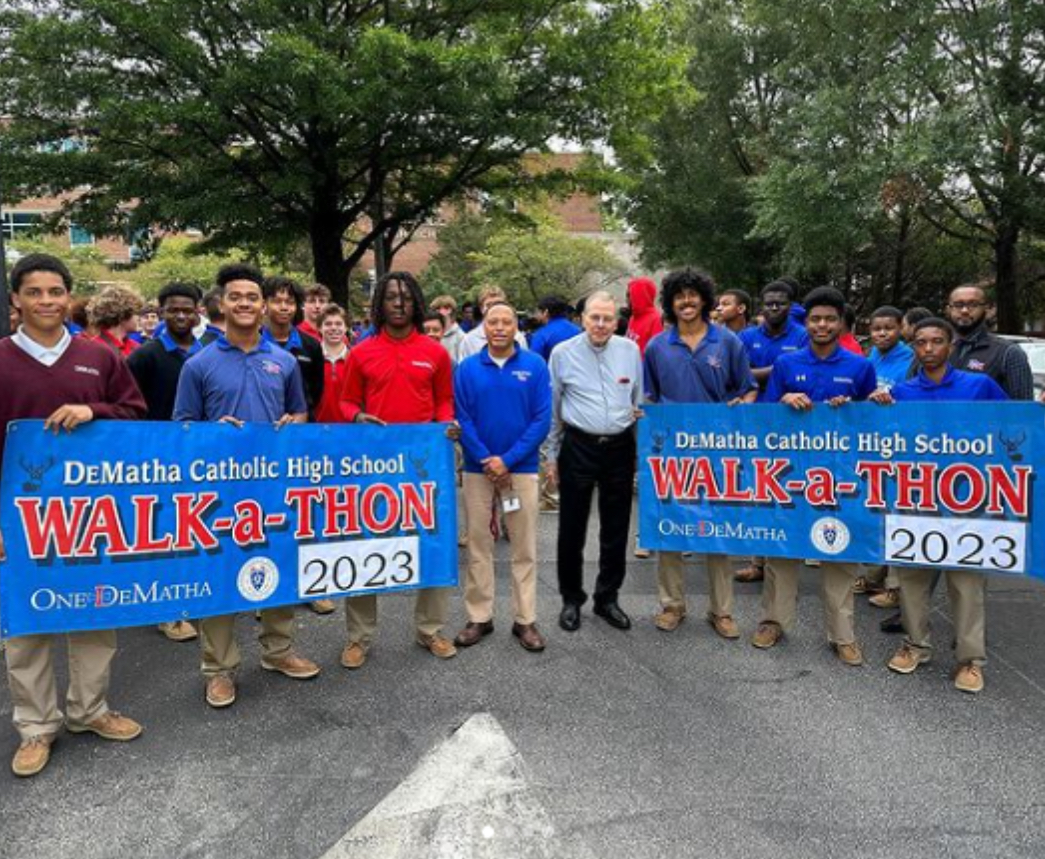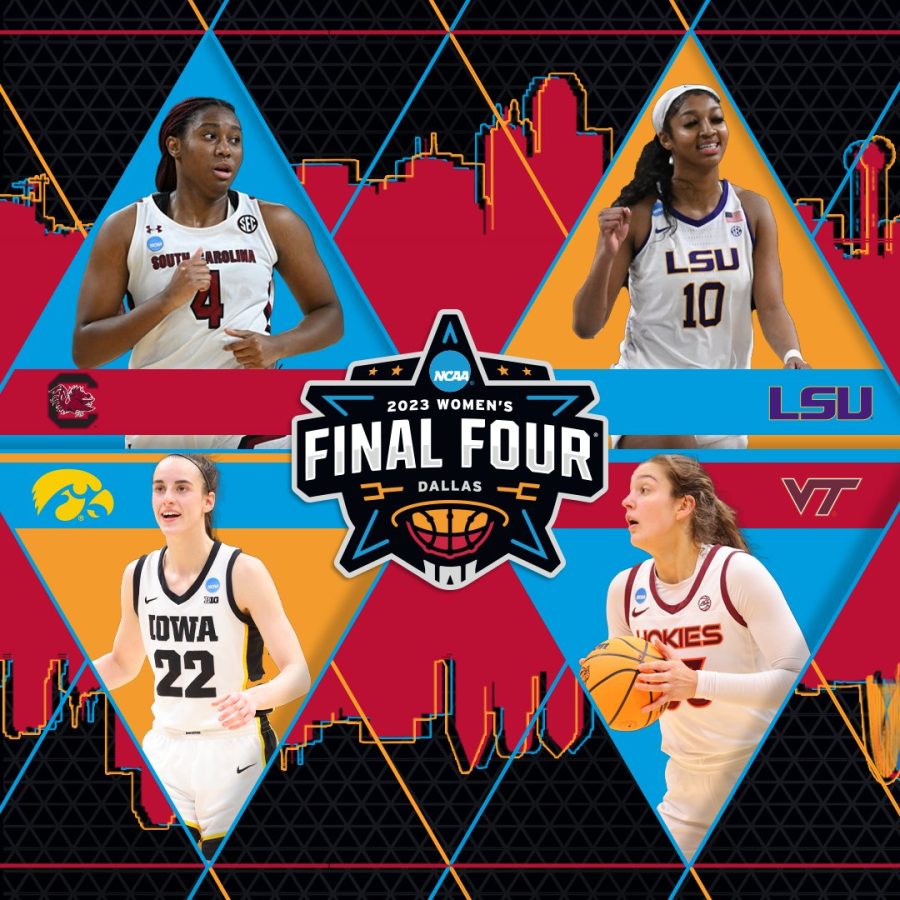The Pathway to Equity: The NCAA vs Women’s College Basketball
May 15, 2023
A lot of fans are enamored with National Collegiate Athletic Association (NCAA) sports because they feature talented athletes across a variety of sports who strive for excellence. According to a study done in 2021, approximately “65.5% of teens and adults in the United States (12 and older)” watch collegiate sports (Learfield 2021). However, most fans who tune in to watch NCAA sports are either unaware of, or ignore the injustices the NCAA imposes upon women’s college basketball.
The NCAA is so dismissive of women’s basketball that they are missing out on the opportunity to promote more stars, attract more viewers, and make more money from the women’s game which is growing in popularity without significant support from the NCAA. If the NCAA decided to brand and promote women’s basketball as much as the men’s game, they would increase game attendance, promote its stars; and generate more revenue. They would also increase TV viewership, improve ratings, and attract more advertisers. If the NCAA created financial rewards to the women’s tournament similar to the men’s tournament, then the women’s team could invest in better accommodations and more benefits (e.g. scholarships, meal plans, living conditions) for their basketball programs.
The NCAA’s lack of promotion towards women’s college basketball stemmed from their reluctance of prescribing the prestigious “march madness” brand onto the women’s game, despite having the trademark for both leagues. Although the NCAA later added the brand to women’s ball in 2022, the refusal of adding it for so long has caused the women’s tournament to be neglected, while the men’s tournament became a billion dollar success. This is represented in the massive discrepancy between men’s and women’s college basketball’s perceived media value. Currently, men’s college basketball is on a luxurious deal with CBS, where they exclusively receive $18.8 billion through 2032. In contrast, women’s college basketball (coupled with 28 other division one championships) is on a measly 14 year, $500 million deal with ESPN that last through 2024.
The NCAA can help promote and fund women’s college basketball by negotiating a broadcast deal that equals the value of women’s basketball’s media rights. According to the 2022 Kaplan report, created by the law firm the NCAA retained to review its gender equity issues, the women’s basketball tournament alone could be worth between $81 million and $112 million on its own in annual media rights by the end of their contract. Currently, the NCAA has women’s basketball on a contract that is 70 percent less of their worth, and 95 percent less than men’s college basketball. If the NCAA promoted women’s basketball as it does with the men’s, then it could establish a new TV deal for women’s college basketball that is both exclusive to women’s basketball and worth the actual value of the sport. In addition the NCAA would be able to make more money for women’s basketball, and eliminate some of the promotional and financial inequalities between the men’s and women’s game.
Another way the NCAA should fix its injustices towards women’s college basketball is by adding financial rewards for participating in the women’s tournament. Financial rewards for the men’s game are instituted into the tournament in the form of “units”-participatory game checks given to each team in the college basketball tournament. There are units earned in each round of the tournament up to the national championship, meaning that the more rounds a team plays in, the more units they receive. The money earned by each team in the tournament is then given to each team’s respective conferences, to which the conference divides the money up evenly to each team in it. This money is usually used to re-invest in the basketball programs, as teams like to spend their money accumulated from units on facilities, trainers, and other essential items.
Men’s college basketball has profited immensely off of tournament units. Between 1997 and 2018, the NCAA supplied over $1 billion dollars to the power five conferences (the Big Ten, the Atlantic Coast Conference, the Big 12, the Southeastern Conference and the Pac-12). As the years have progressed, the value of units are continuously increasing. In the 2023 men’s basketball tournament, $264 million worth of units were dished out (132 games, $2 million per unit), resulting in 10 conferences making at least $10 million, five conferences making at least $24 million, and the highest conference earner (the SEC) netting $34 million. In contrast, women’s basketball has received almost nothing compared to men’s basketball, as the NCAA has not contributed a penny for a single win in the women’s tournament since its inception in 1982.
One reason why the NCAA should give women’s college basketball tournament units is because units would increase women’s basketball’s revenue substantially. The alleged substantial increase in revenue from adding units to the women’s tournament is based on the major impact units provide for smaller men’s conferences. In a 2014 report by the Washington Post, the financial impact of units for smaller (less funded) men’s conferences was around 20-25% of their total revenue even if none of the conference teams advanced to further rounds, allowing for more units. Currently, the financial impact of units would be greater for women’s basketball as opposed to the 2014 report due to the fact that the value of units rise by 3% every year. The increased revenue for women’s basketball would allow for women’s programs to reinvest in themselves, as they could spend their extra money on upgrading facilities, improving living conditions, and recruiting. If they were granted the opportunity to improve their workout and practice conditions, women’s college basketball could produce more college stars, and make the game better overall.
Another reason why tournament units should be implemented into women’s college basketball is to help reward women’s basketball coaches who build more competitive, winning programs . When asked what the NCAA can implement to help women’s basketball close the gap with men, 3 times “Coach of the Year” recipient Dawn Staley replied with units, stating that she would “like for [the NCAA] to divvy it up like the 68 teams get (their money) divvied up once the tournament ends.” The women’s basketball coaches are not arguing for the same amount of value per unit as the men’s, rather they are pleading for just the implication of units. When asked to state his opinion of revenue sharing, Louisville head coach Jeff Walz stated that “it’s not going be what the men’s side is”, however “Just something would be impressive.” If the NCAA could incorporate a unit system that is the same format as the men’s and pays the value per unit warranted from the revenue of women’s basketball, the NCAA would be closer to achieving true equity between men and women’s basketball, and would be eliminating the discrimination of the NCAA towards women’s college basketball.
One counter argument against the belief the NCAA should promote women’s college basketball, or give women’s basketball tournament units as they do with the men’s is the ideology that the NCAA is justified in providing minimal resources to women’s college basketball due to women’s basketball’s lack of revenue. Women’s basketball does not generate as much revenue as the men’s, as according to the world sports network, the NCAA men’s basketball program’s revenue is massive in comparison to the women’s basketball program’s revenue. The worst example of this came in during the 2019 college basketball tournament, when the NCAA reportedly netted $864.6 million from the men’s tournament, and lost $2.8 million from the women’s tournament, the worst net gain in any NCAA championship. Although women’s college basketball isn’t as profitable as men’s basketball, and posted a year where they were a net-negative in profitability, the sport is currently a profitable business performing at an all-time high.
One way the sport is performing well is through its increased viewership and ratings. This year’s women’s college basketball final amassed 9.9 million average viewers. The games viewership is up 57 percent from the 2015 finals, and is the most viewed game of all time. This year’s uptick in viewership allowed the women’s final to get higher ratings than multiple prominent sporting events as it exceeded the Duke-North Carolina rivalry, ACC championship, NBA playoffs, and the World Series. The increase of viewership and ratings from the women’s finals shows that women’s basketball appeals to fans, and is a notable and profitable figure in the sports and entertainment industry.
Another way that women’s college basketball is performing well is through the influx of NIL marketing deals in the sport. NIL stands for name, image, and likeness. Recently established by the NCAA, NIL deals allow collegiate athletes to get paid based on their name, image, and likeness. Women’s college basketball is one of the biggest utilizers of NIL. According to Sports Pro Media, “NIL agreements in women’s basketball made up 18.5 percent of the overall total, ranking only behind men’s football, which dominates with more than 50 percent of all revenue.” The substantial amount of NIL compensation earned by women’s college basketball is reflected in the lucrative NIL deals the top women’s basketball earners make. At the end of the 2023 women’s basketball tournament, 23 women basketball athletes made at least $50k, 17 made at least $100k, seven made at least $500k, and the top NIL women’s basketball earner (Angel Reese) made an astonishing $1.4 million this year. The immense NIL activity present in women’s college basketball also proves how women’s basketball is a legitimate business. The increased money, ratings, and viewership demonstrated by women’s basketball in its most recent years disproves the narrative that women’s college basketball generates a lack of revenue, or that the NCAA is reasonably justified for not investing in or promoting women’s college basketball.
All in all, the NCAA discriminates against women’s college basketball through the marketing, financial, and structural inequalities between men’s and women’s college basketball. In order to resolve this issue, the NCAA should promote and market women’s basketball and provide tournament units to the women’s game as they do with the men’s. If the NCAA invests in women’s basketball as much as they do with the men’s game, it could be reasonably assumed that the NCAA could own two of the most successful basketball leagues in the world. It is up to the NCAA to not decimate a dazzling league whose protagonists are women athletes.





![DeMatha Catholic [@DeMatha Catholic]. 2025, September, 19. Instagram.](https://demathastagline.com/wp-content/uploads/2025/09/IMG_3305.jpeg)
















